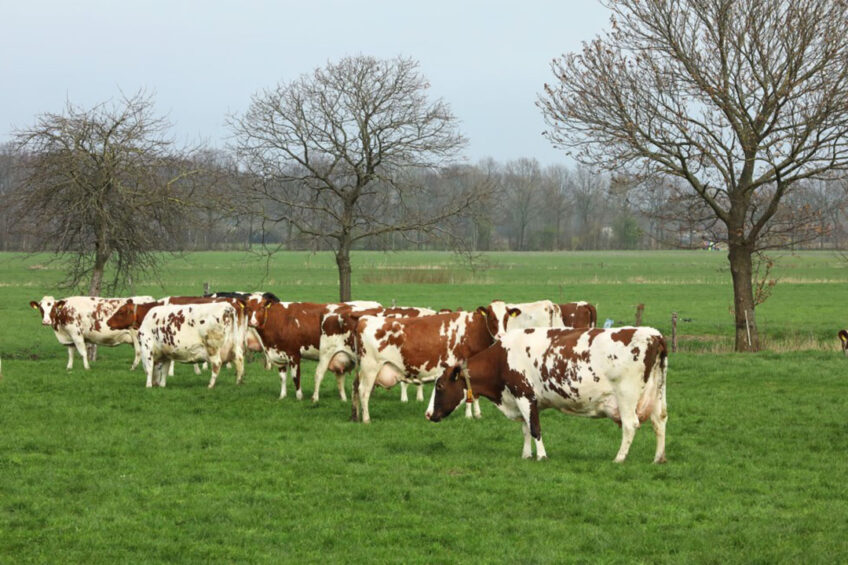Netherlands: Carbon footprint of raw milk falls 35%

Scientists have found that greenhouse gas emissions per kg of Dutch farm milk have fallen by 35% between 1990 and 2019 based on a life cycle assessment (cradle to farm gate).
The carbon footprint of raw cow milk produced in the Netherlands in 2019 was 992g CO2-eq. per kg fat and protein corrected milk (FPCM), compared with 1,522g CO2-eq in 1990.
The reduction rate of the carbon footprint is affected by the scope of the study, with a smaller reduction rate encountered if direct land use change (32%) and soil organic carbon balance (29%) are considered.
Methodological changes affect the absolute level of the carbon footprint by up to 27%, but the impact on the reduction rate over time is negligible.
The research team concluded that many elements influence this decrease in greenhouse gas emissions per kg of milk – from less electricity and compound feed use per kg of milk to almost halving the amount of applied nitrogen per hectare and from an increase in dairy cow productivity to a smaller youngstock herd.
Along with this process, the Dutch dairy system has evolved into less grazing and less land devoted to permanent grasslands which decreased carbon sequestration, according to the researchers from multinational dairy cooperative FrieslandCampina, Wageningen University and Research, Blonk Consultants and Schothorst Feed Research.
Results
Carbon footprint reduction (high to low) and greenhouse gas emissions 1990-2019:
- Enteric methane: -15%
- Roughage production on farm: -52%
- Purchased resources: -54%
- Manure storage and stable: +26%
- Energy use: -47%
To achieve climate targets, the annual reduction rate needs to be increased and additional efforts are required if the Dutch dairy sector is to play its part in limiting global warming to 1.5°C. They highlighted that the industry needs to reduce greenhouse gas emissions from manure storage and enteric fermentation but added the main future challenge was to find a balanced set of measures to integrally reduce all the sources of GHG emissions within the milk carbon footprint.
Commenting on the research, published in the Journal of Cleaner Production, Margrethe Jonkman, global director research and development at FrieslandCampina, said the research showed the determination of Dutch dairy farmers who remain committed to delivering food with an increasingly lower climate impact.
“We are aware that our climate goals towards 2030 require acceleration. But this research and our own extensive monitoring at the individual farm level are positive and show that our member dairy farmers can achieve this.”






